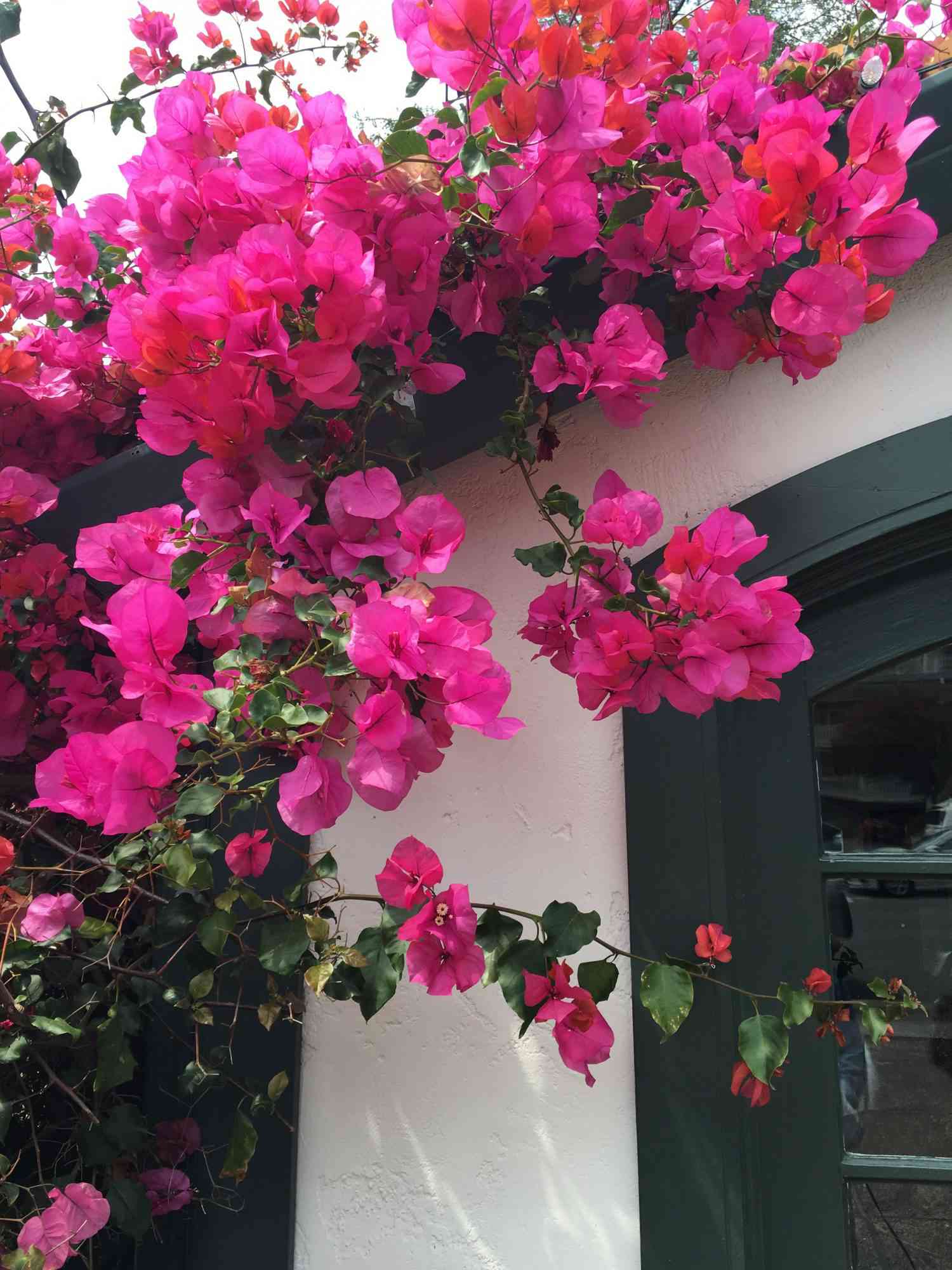Climbing vines are synonymous with stately houses, historic estates, and beautiful architectural design. Cascading wisteria, flowering mandevilla, creeping ivy—they’re so pretty and so widely planted, but are they doing damage to the structures upon which they climb? The short answer is: It depends.
Vines require attention, and the more consistent attention, care, pruning, and corralling you can provide to keep them contained and healthy, the better and more manageable they’ll grow. Untended, vines can run rampant. They can rot wood, destabilize decor, and take over completely. Left unpruned for long enough, vines can do insidious things to structures.
However, under the right conditions, vines can be just fine. Growing up a sunny stone wall where they are dry, accessible, adequately pruned, and fastidiously tended is a promising start. Here’s the truth about planting climbing vines near your home and which varieties to stay away from.
How to Choose Vines
When choosing a vine to plant, there are a few to avoid, or at least some you should consider from all angles. The Grumpy Gardener makes the argument that while these monster vines are often beautiful, they are also unstoppable. Asian species of wisteria can pull a gutter off a house and bend iron railings. Plant American wisteria (Wisteria frutescens) instead. Japanese honeysuckle (Lonicera japonica) wanders way past where it’s planted. Several species are practically impossible to get rid of once they’ve taken hold in the garden (or along your south wall). Trumpet honeysuckle is a better alternative.
Trumpet vine, also known as trumpet creeper, grows in any soil and is drought-tolerant. It grows quickly in one season, making it ideal for covering sore spots in your garden. Its trumpet-shaped red flowers attract hummingbirds to your yard. But it grows quickly and spreads fast. It can’t be controlled.
Protect Your Structure
If you want the vine-covered look but are concerned about protecting your structure, you can use trellises, frames, or wires (or a combination of those structural assistants) that aren’t attached to your structure’s exterior to keep the vines corralled and your home safe. Make sure to keep any vines near or on your home trimmed so they don’t get near wires, gutters, or downspouts where they could cause damage as they twist and climb. Consider planting vines along a fence, as a ground cover, on a shed, or around your mailbox instead.

Annual Vines to Consider
For a commitment that’s not long-term, consider annual vines. They grow quickly from seed and only last one season, so you can enjoy the color and dramatic effect without the maintenance obligation.
Morning glory (Ipomoea tricolor) flowers only last one day, but new ones bloom daily from summer through fall. They come in blue, pink, and white. Moonflower (Ipomoea alba) produces heart-shaped leaves and large funnel-shaped flowers that open after sundown and into the night, even on cloudy days. This vine works fast to cover an arbor, trellis, or fence. Before planting, keep in mind both of these vines are toxic to humans and animals.

Perennial Vines to Consider
With regular pruning to shape and remove dead or damaged stems, long-lasting perennial climbing vines are easier to control than invasive species. They work well on trellises, arbors, and other structures.
The climbing hydrangea (Hydrangea anomala) is one of the few flowering vines that can tolerate shade. It gets heavy, so keep it pruned to maintain the shape and space you want it to take. Carolina jessamine (Gelsemium sempervirens) doesn’t cause damage that many other vines can. It grows quickly and provides a good cover as a screen, with fragrant yellow flowers in early spring. It’s also deer-resistant.
Bougainvillea (Bougainvillea) and mandevilla (Mandevilla spp.) prefer sunny locations. Bougainvilleas range from compact to much larger varieties that grow 100 feet high or more. Mandevilla vines are tropical plants that can be grown as annuals in colder regions.
Let star jasmine (Trachelospermum jasminoides) and trumpet honeysuckle (Lonicera sempervirens) spread as a ground cover. Star jasmine’s fragrant star-shaped flowers attract bees and butterflies. Grow this vine in sun or shade in moist, well-drained soil. Trumpet honeysuckle isn’t as sweetly scented as the Japanese variety we sipped in our childhoods, but its beautiful red blooms draw hummingbirds and add color to the garden.
Vines or no vines? It’s up to you: Consider the species you’re planting, the surface they’re covering, and the conditions in which they’re growing. Some combinations are recipes for disaster (i.e. damp wood in the shade), while others, like sunny patches of walls made of strong, more impermeable materials, will likely be just fine.

What are your favorite vines to plant? Do you have any growing on your home, and have you had trouble tending them?
Was this page helpful?
Thanks for your feedback!
Tell us why!